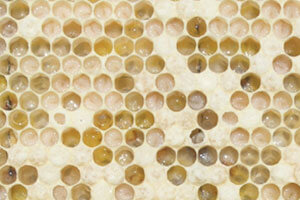
Last month I talked about the queen’s habit of mating with many males, storing their sperm, and using that sperm to produce daughters that are genetically diverse. This habit of multiple mating is called polyandry which, if one recalls one’s Greek means poly-many, andry-males. The opposite of this polygyny – many females, which in social insects means multiple queens. This is what the ants and termites do. Their large, amorphous, subterranean colonies host multiple secondary queens – daughters of their mother that decided to stay in the nest, mate, and contribute progeny to the common citizenry, much like fiefdoms at the edge of empire. One can see that the result with either strategy is the same – a colony with genetically diverse members. My personal hypothesis for the dominance of polyandry in the case of the honey bee and its cousins in the genus Apis is their relatively small nests. It’s much easier for one queen to assert her hegemony – whether through behavioral policing or inhibitory pheromones – in a nest the size of a basketball. Ant and termite queens, in contrast, would have to assert their dominance over a space the size of an acre or more. Inevitably order broke down in the provinces, independent queenlets rose up, polygyny creeped in, and ultimately polygyny carried the day.
But we digress.
My more immediate point is – in our honey bee Apis mellifera, polyandry has proven a remarkably successful strategy for making the colony more fit. As I mentioned last month, polyandry can only be understood as an adaptive strategy at the level of colony, not individual. When it comes to highly-polyandrous queens it is their colonies that are more disease resistant1,2, 3,
their colonies that reproduce better4, and their colonies that resist Varroa mites better.5 It seems to me that this is something beekeepers should be interested in.
This was the idea behind my English sabbatical. My host Dr. Giles Budge and I thought that polyandry had been largely overlooked in contemporary bee breeding. Or worse, derided as an obstacle to bee breeding. It is a supreme irony that popular American queen breeding literature, more often than not, treats multiple mating as a liability to overcome not an asset to exploit. It is seen as an impediment to mating control in the context of traditional trait-based selection (see for example Morse 1979 p. 30 and Taber 1987 pp. 71-73). After all, how precise can a breeding scheme be when you unloose virgin queens – however rigorously selected they may be – to mate with whatever drones are in the neighborhood?
Let it be said for now that there appears to be…


